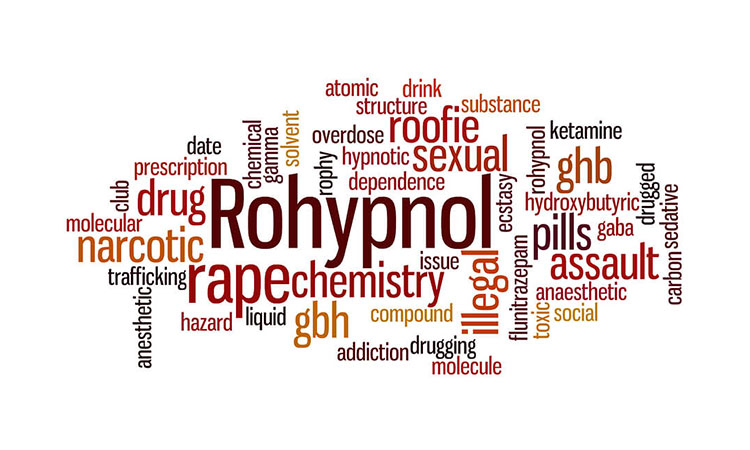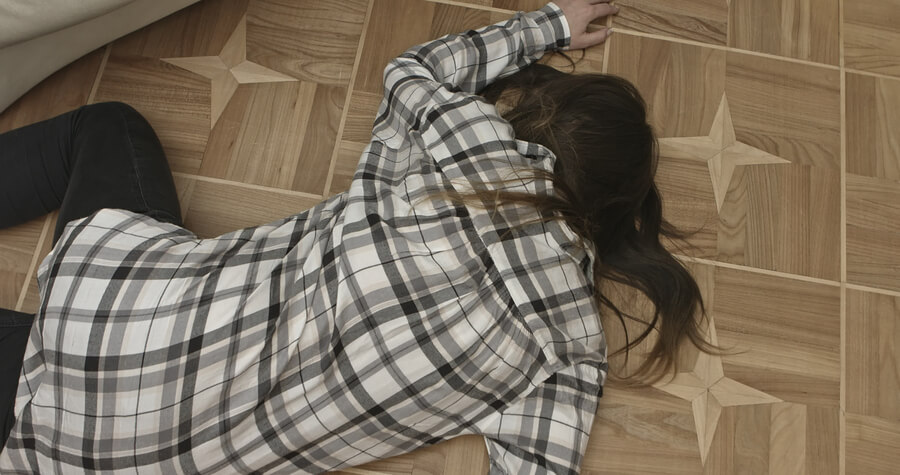
Rohypnol, commonly known as “roofies,” is not approved for use in the United States. Nonetheless, like other benzodiazepines, it is classified by the DEA as a Schedule IV substance, indicating that it has a lower potential for abuse than other drugs and does have some legitimate medical purpose.
Rohypnol, along with GHB, is among the best-known date rape drugs. Despite its relatively low scheduling, it is frequently abused for its sedative properties.
What Are Roofies?
Rohypnol (flunitrazepam) and other benzodiazepines (e.g., Ativan, Xanax, and Valium) act as central nervous system (CNS) depressants. Roofies are reportedly ten times stronger than Valium and is commonly used in other countries such as those in Europe and Latin America for the treatment of anxiety and sleep disorders.
Rohypnol As a Date Rape Drug
There have been a large number of cases of unintentional Rohypnol use. During the college years, an estimated 1 in 4 women experience date rape or attempted rape, and a significant amount of these incidents involve substances such as Rohypnol and alcohol.
Rohypnol was first synthesized in Switzerland in 1975, intended for medical use. Soon, however, instances of misuse were reported throughout Europe. Sexual predators began frequently employing the use of Rohypnol by secreting dropping a pill in a person’s drink without their knowledge. After it quickly dissolves and is consumed, the perpetrator is free to take advantage of the unsuspecting victim who ingested it.
Rohypnol has been most commonly found as a white, odorless and flavorless drug, making it almost impossible to detect when it’s been slipped into a drink. Some manufacturers reformulated it into green tablets that make drinks blue when mixed, making it more identifiable. Both types of pills are still being produced, however, and cases of date rape involving use of the drug are still a problem in the United States.
How Are Roofies Used?
Rohypnol pills are often swallowed, either with water or alcohol, or chewed and then dissolved sublingually (under the tongue). Pills typically come in 0.5-2 mg doses, but users may take many to intensify the effects. Some users will crush the pills and snort the remaining powder, smoke it with marijuana, or sometimes even inject it.
Also, people who use heroin, cocaine, ecstasy, or LSD might use Roofies to either amplify the positive effects or temper the adverse effects of these drugs. Rohypnol and alcohol is, unfortunately, a popular and infamous combination at both clubs and parties. Once Rohypnol enters the body, effects take about 20 minutes to onset and can last for 12 hours or longer.

Origins of Rohypnol in the U.S.
Although physicians do not prescribe Rohypnol in the U.S., there is enough demand that shipments have frequently been smuggled in from abroad. It may be procurable by asking around at a club or on the Dark Web, as drug trafficking websites have illicit substances to be ordered and shipped to addresses in the U.S.
In 1996, the Drug-Induced Rape Prevention Act increased the restrictions and penalties associated with the use of the drug. Being found in possession of Rohypnol can lead to a fine and up to 3 years in jail, and importation or distribution is punishable by as much as 20 years.
Symptoms of Rohypnol Abuse
Some people, especially teenagers and young adults, abuse Roofies in an attempt to manage co-occurring mental health disorders, such as anxiety or insomnia, or solely for the sedative high that Rohypnol induces.
If someone is abusing Rohypnol, you might notice some warning signs, which can include the following:
Effects of Rohypnol Abuse on the Brain
Roofies work to depress brain function and CNS activity, and it can accomplish this to a profound degree. It has a potent tranquilizing effect, and many users have described it as “paralyzing.” This dramatic reduction in activity in the brain and body is compounded when it is used in conjunction with alcohol.
This overall effect helps to explain why people who have the drug slipped into a drink without their consent become vulnerable and incapacitated. Death from an overdose of Rohypnol is much more likely to occur when alcohol use is involved.
Other mental side effects of Rohypnol can include:
Effects on the Body
The incapacitating effects caused by Rohypnol are both physical and psychological. As brain activity slows dramatically, the body’s functions will also experience a similar reaction. Some of these effects may be evident to others, but some are internal, and may not be identified until they result in a medical emergency.
Physical side effects of Rohypnol may include the following:

Rohypnol Addiction and Withdrawal
If a person begins regularly abusing Rohypnol, he or she may soon discover that habit can be quite challenging to quit. Both psychological and chemical dependence hallmark Rohypnol addiction. These conditions are more like two sides of the same coin.
Psychological dependency becomes apparent when the person starts engaging in compulsive drug-seeking behaviors to fulfill an emotional need. This type of dependence can develop with regard to the use of nearly any psychoactive substance—marijuana, for example. Rohypnol, just like cocaine and heroin, can also result in what is called a chemical or physiological dependence.
When a person misusing Rohypnol discontinues drug use, he or she may encounter highly unpleasant symptoms of drug withdrawal. This effect is the result of the body’s intense reaction to the drug’s sudden absence and is a tell-tale sign that the person is chemically dependent.
Withdrawal symptoms of Rohypnol addiction can include the following:
Rohypnol withdrawal can induce seizures up to a week after a person’s last use. Rohypnol treatment typically consists of a prolonged supervised detox period that often involves a drug taper or gradual reduction in doses over the course of several weeks.
Many cases of addiction develop as users are simply trying to avoid withdrawal. If you recognize symptoms of Rohypnol misuse in yourself or someone you love, you should seek help as soon as possible to prevent further abuse and the myriad of risks associated with this behavior.
Getting Help for Rohypnol Addiction
If you or a loved one is struggling with addiction to Rohypnol, other drugs, or alcohol, the best path to recovery is through specialized treatment. This path may entail detox, followed by a partial-hospitalization or outpatient program.
Through the use of comprehensive treatment programs, Midwood Addiction Treatment offers help to those who are motivated to recover from substance abuse. Addiction is a chronic, relapsing disease that is most effectively treated using an integrated approach that includes therapy and medication, as well as holistic elements, such as proper diet and exercise.
Our team of addiction specialists employs evidence-based services vital to the process of recovery, such as psychotherapy, counseling, group support, and aftercare planning. We are dedicated to providing people with the tools, resources, and support they need to become sober, prevent relapse, and foster satisfying lives, free from the use of drugs and alcohol!